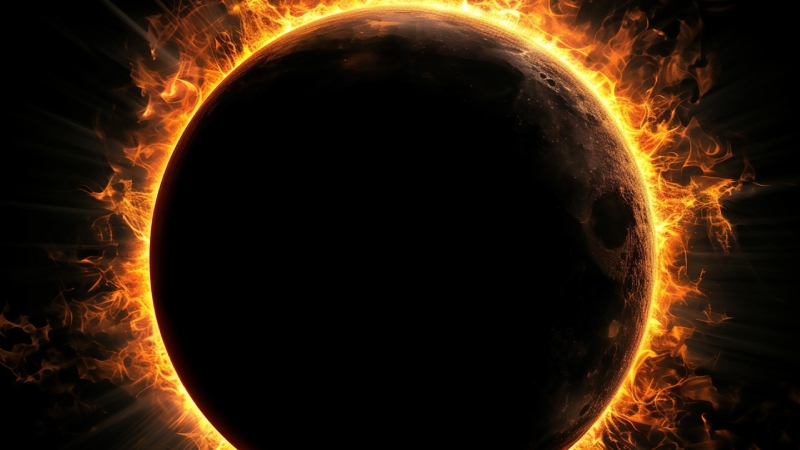
Solar storm occurs when there is a disturbance in the Earth's magnetosphere
It is caused by a significant increase in solar wind activity
Auroral activity observed in countries such as the United States
A solar storm, also known as a geomagnetic storm, occurs when there is a disturbance in the Earth’s magnetosphere caused by a significant increase in solar wind activity or a coronal mass ejection (CME) from the Sun. Solar storms are characterized by a surge in the flow of charged particles, primarily electrons and protons, emitted by the Sun’s outermost layer, the corona.
When these charged particles interact with the Earth’s magnetic field, they can cause disturbances in the magnetosphere, resulting in phenomena such as the northern lights (aurora borealis) and the southern lights (aurora australis). These stunning displays of light occur primarily in the polar regions, near the Earth’s magnetic poles.
Also Read: What are Northern Lights that illuminated skies worldwide amid solar storm?
During a solar storm, the increased influx of charged particles energizes atoms and molecules in the Earth’s atmosphere, particularly oxygen and nitrogen.
When these energized particles collide with atoms and molecules in the atmosphere, they release photons of light, producing the vibrant colors characteristic of the auroras.
In the case of the recent event on Friday, an unusually strong solar storm hit Earth, leading to a surge in auroral activity observed in countries such as the United States, United Kingdom, Australia, and New Zealand. Social media was abuzz with awe-inspiring images and videos of the northern lights illuminating the night sky.
Solar storms can also have practical implications beyond their aesthetic beauty. They have the potential to disrupt power grids, satellite communications, and GPS systems, posing challenges for technology-dependent infrastructure. Therefore, monitoring and understanding solar activity is crucial for mitigating the impact of solar storms on Earth’s technological systems and infrastructure.

Solar storm occurs when there is a disturbance in the Earth's magnetosphere
It is caused by a significant increase in solar wind activity
Auroral activity observed in countries such as the United States
A solar storm, also known as a geomagnetic storm, occurs when there is a disturbance in the Earth’s magnetosphere caused by a significant increase in solar wind activity or a coronal mass ejection (CME) from the Sun. Solar storms are characterized by a surge in the flow of charged particles, primarily electrons and protons, emitted by the Sun’s outermost layer, the corona.
When these charged particles interact with the Earth’s magnetic field, they can cause disturbances in the magnetosphere, resulting in phenomena such as the northern lights (aurora borealis) and the southern lights (aurora australis). These stunning displays of light occur primarily in the polar regions, near the Earth’s magnetic poles.
Also Read: What are Northern Lights that illuminated skies worldwide amid solar storm?
During a solar storm, the increased influx of charged particles energizes atoms and molecules in the Earth’s atmosphere, particularly oxygen and nitrogen.
When these energized particles collide with atoms and molecules in the atmosphere, they release photons of light, producing the vibrant colors characteristic of the auroras.
In the case of the recent event on Friday, an unusually strong solar storm hit Earth, leading to a surge in auroral activity observed in countries such as the United States, United Kingdom, Australia, and New Zealand. Social media was abuzz with awe-inspiring images and videos of the northern lights illuminating the night sky.
Solar storms can also have practical implications beyond their aesthetic beauty. They have the potential to disrupt power grids, satellite communications, and GPS systems, posing challenges for technology-dependent infrastructure. Therefore, monitoring and understanding solar activity is crucial for mitigating the impact of solar storms on Earth’s technological systems and infrastructure.
